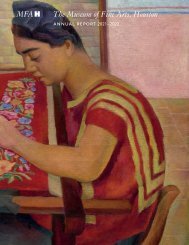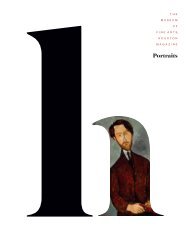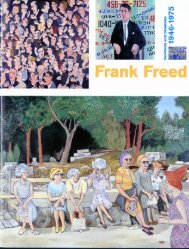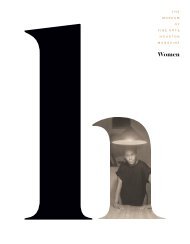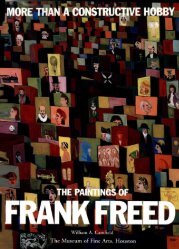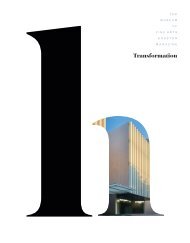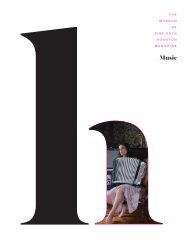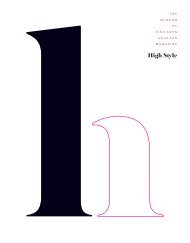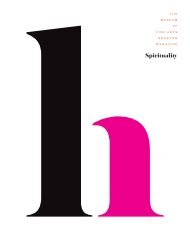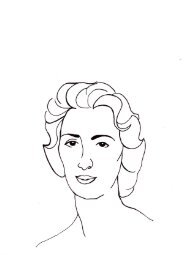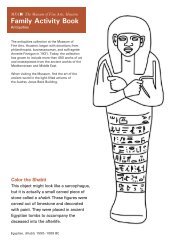You also want an ePaper? Increase the reach of your titles
YUMPU automatically turns print PDFs into web optimized ePapers that Google loves.
18<br />
7 × 4 1/2 × 1 3/4”<br />
4 1/2 × 5 × 1 3/8”<br />
1500–500 BC<br />
This Japanese dogu, or clay figurine, depicts a<br />
heavily decorated person. <strong>The</strong> body shape is typical<br />
of the Final Jomon period (c. 1000–300 BC), but<br />
the headdress is markedly different—it consists of a<br />
circular headpiece topped by rectangular protrusions.<br />
<strong>The</strong> purpose of dogu remains a mystery: nearly all<br />
surviving examples are broken at the arms, legs,<br />
or waist, leading scholars to believe they were<br />
deliberately fragmented, possibly to heal the sick by<br />
releasing bad spirits. <strong>The</strong>y also speculate that these<br />
figures are wearing masks—possibly representing the<br />
transformation of the human into the superhuman.<br />
11th century<br />
Figural imagery is widely appreciated in the secular sphere of<br />
Islamic art. This handle or doorknocker fashioned in the form<br />
of a man was most likely placed in a secular setting like a private<br />
home. On the man’s clothes, gold and silver inlay create delicate<br />
knot-scroll motifs characterized by endless loops and dizzying<br />
geometric patterns.




